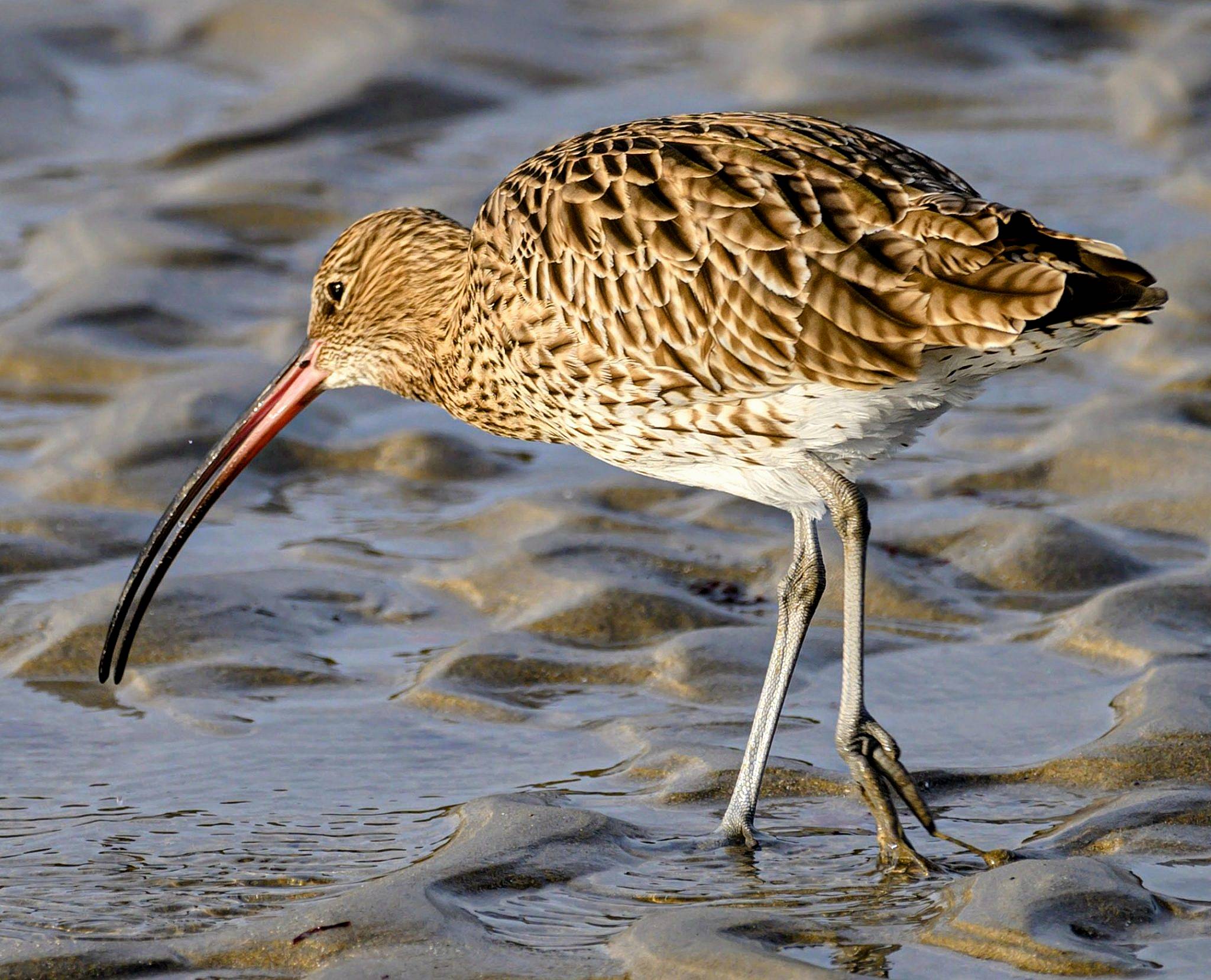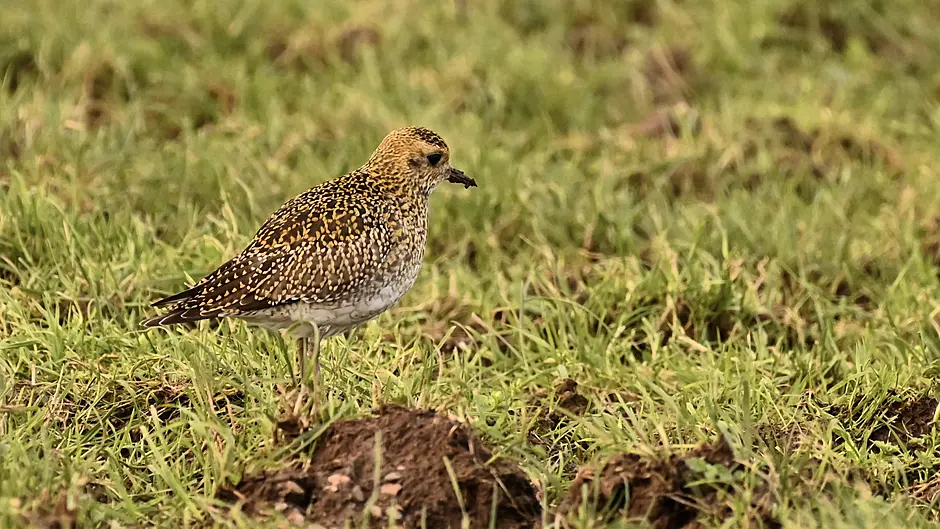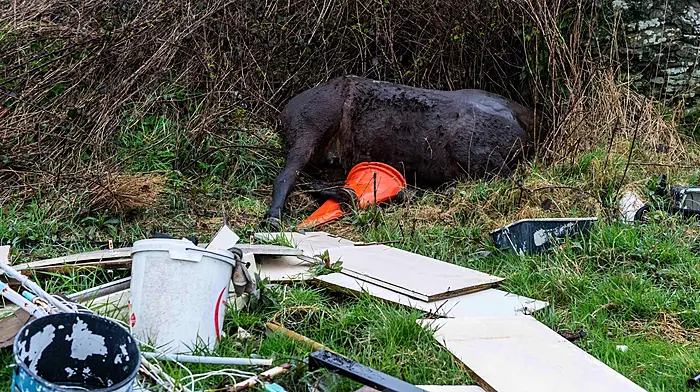
AS winter sets in, wildlife sightings might seem to dwindle. However, for bird enthusiasts, West Cork’s marshes, estuaries, lagoons, and mudflats come alive, transforming into a haven for wading birds. Most Sundays, our family visits birding spots such as The Gearagh, Courtmacsherry Bay, Rosscarbery Estuary, Clogheen Marsh, Lough Cluhir, and Blind Harbour. Here, we find a remarkable array of species: black and bar-tailed godwits, oystercatchers, curlew, dunlin, redshank, and greenshank, to name just a few. Winter bird-watching is a rewarding experience, revealing an often-overlooked side of the season.
Long-legged waders
Waders are a fascinating group of birds, distinguished by their behaviour of wading along shorelines in search of food. Their long legs allow them to forage in shallow water without getting wet, and they vary widely in size, shape, and colour. Many species also have long bills, such as the curlew’s, adapted for probing the mud just below the water’s surface in search of worms, molluscs, and crustaceans.
Identifying waders can be challenging, as many share similar grey or brown, speckled plumage. However, close observation reveals subtle, distinguishing features. Seasonal – and adult-versus-juvenile – plumage variations add to the difficulty. Patient birdwatchers soon learn to recognise these intriguing birds and appreciate the unique traits of each species. Here, just to get started, we dip into three of the species you are likely to spot in local wetlands at this time of year.
 The lapwing, our national bird, feeding in the shallows of the Ilen River. (Photo: Nick Haigh)
The lapwing, our national bird, feeding in the shallows of the Ilen River. (Photo: Nick Haigh)
Lovely lapwing
The lapwing (Vanellus vanellus), designated Ireland’s national bird in 1990, is a bird to be enjoyed by both beginner and seasoned birdwatchers. About the size of a pigeon, they have a brownish back, white underparts, and a black chest that extends to a striking black-and-white head topped with a distinctive black crest. In the right light, their darker feathers show a beautiful purple-green iridescence. When large flocks take flight, their two-toned bodies create a captivating flickering effect as the light catches their pale underbellies.
Now is a great time to keep an eye out for them. Although lapwing are resident in Ireland year-round, their numbers swell in winter as additional birds arrive from Western and Central Europe, drawn by the milder climate.
Unfortunately, the lapwing is red-listed on the Birds of Conservation Concern in Ireland, with both resident and visiting populations in steep decline. Over the past two decades, Ireland’s wintering lapwing population has plummeted by 64%, an alarming trend. Irish resident breeding lapwing, along with curlew, have seen an even more catastrophic decline of over 90% in the same time period. Their decline is largely due to their ground-nesting habits and preference for boggy areas and open farmland, habitats increasingly affected by intensive farming, drainage, and land reclamation.
 A curlew making use of their long curved bill to search for food in Rosscarbery. (Photo: Nick Haigh)
A curlew making use of their long curved bill to search for food in Rosscarbery. (Photo: Nick Haigh)
Critical for curlew
Curlew (Numenius arquata) are Ireland’s largest wading birds, recognised by their distinctive long, down-curved bills, bulky bodies, long necks, and greyish-brown plumage with bold streaking. The only similar species is the smaller whimbrel, which has a shorter, kinked bill and a prominent dark eye stripe.
Curlew are also known for their evocative calls. We have found that the Merlin Bird ID app by the Cornell Lab is a useful tool for identifying and learning the sounds of wading birds in the field.
The curlew is also red-listed, with native breeding populations at alarmingly low levels. Data from 2021 revealed that only 105 breeding pairs remained. However, during winter, curlew from more northerly regions, such as Scandinavia and Scotland, migrate to our wetlands and estuaries. This explains their visible and audible presence despite the decline in Ireland’s own breeding curlew. Even with these visitors, research shows the number of curlew wintering in Ireland has decreased by 43% over the past 23 years. National conservation efforts are underway to address this decline.
Golden plover
At this time of year, large flocks of golden plover (Pluvialis apricaria) arrive on our shores from Iceland. A small breeding population resides in Ireland’s northwest, and some birds also visit in summer from France and Iberia. In winter, they gather on coastal mudflats and farmland, where they feed on invertebrates like worms, beetles, and also plant material. Golden plover numbers have also declined; 54% in the last 23 years.
Golden plover are dynamic in that they look very different whether sporting their summer or winter plumage. In summer, they boast a vibrant coat of deep golden and black, with a jet-black face, throat, and belly contrasted by a bright white line along the neck. As winter arrives, this brilliant attire transforms into a more muted greyish-brown, with subtle mottling for camouflage.
Why come here
According to the National Parks and Wildlife Service, over 750,000 waterbirds arrive each winter to shelter in Ireland’s wetlands, which lie along the ‘East Atlantic Flyway’. These birds breed in colder northern regions in spring and summer but fly south for milder wintering grounds. Frozen lakes and estuaries make feeding difficult, making Ireland’s mild, wet winters ideal for survival.
Irish Wetland Bird Survey
You may wonder about the population decline figures mentioned in this article. Most originate from the Irish Wetland Bird Survey (I-WeBS), which has been monitoring wintering waterbird populations at wetland sites for over 25 years. This initiative relies on dedicated volunteers, NPWS conservation rangers, and BirdWatch Ireland staff.
Continued monitoring is crucial; as the saying goes, ‘what gets measured, gets managed’. This is a critical time for conservation efforts. Habitat protection and restoration to safeguard these birds, in both their breeding and wintering areas here, will be vital. If you would like to get involved, please contact BirdWatch Ireland. At the very least, taking an interest in these birds and advocating for their intrinsic value will help champion
their cause.






